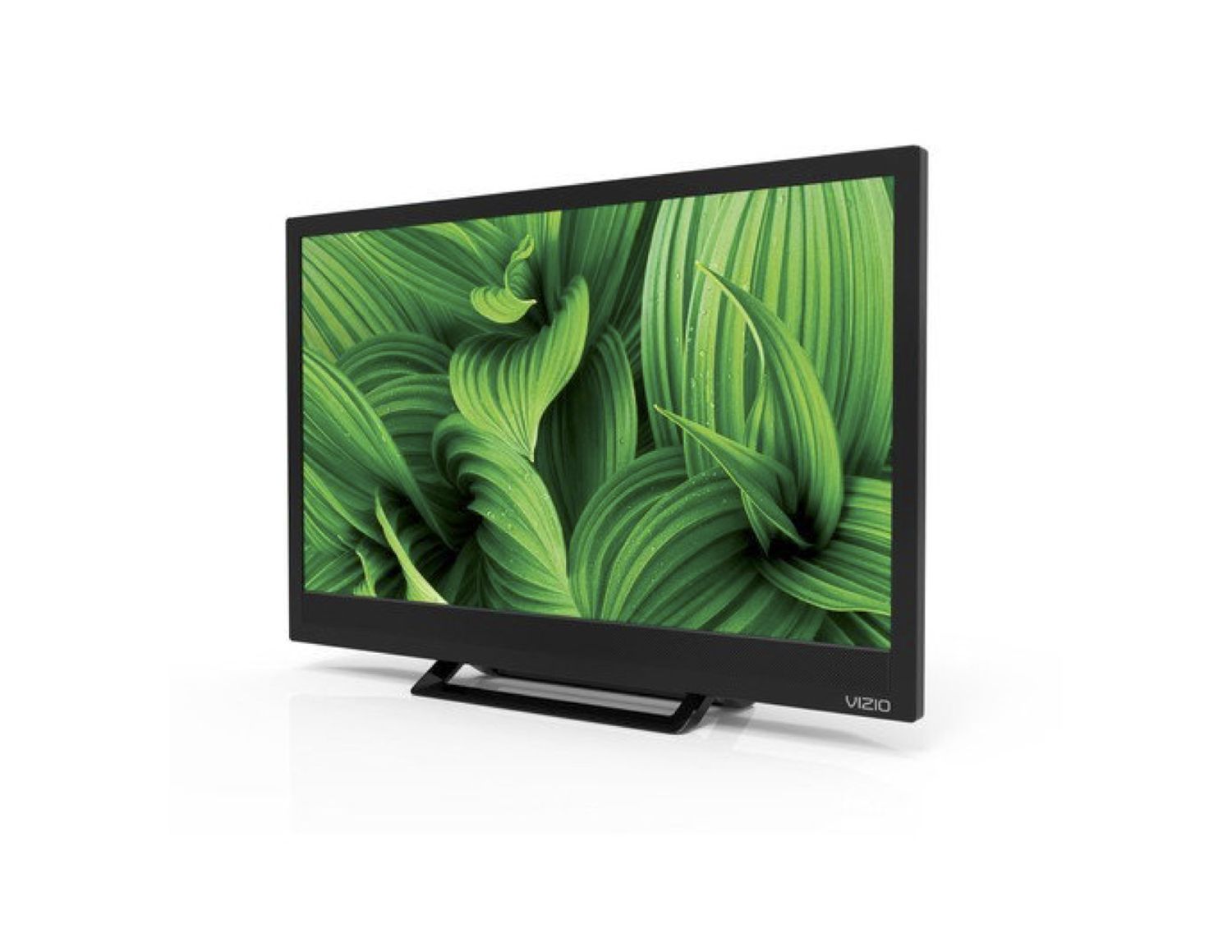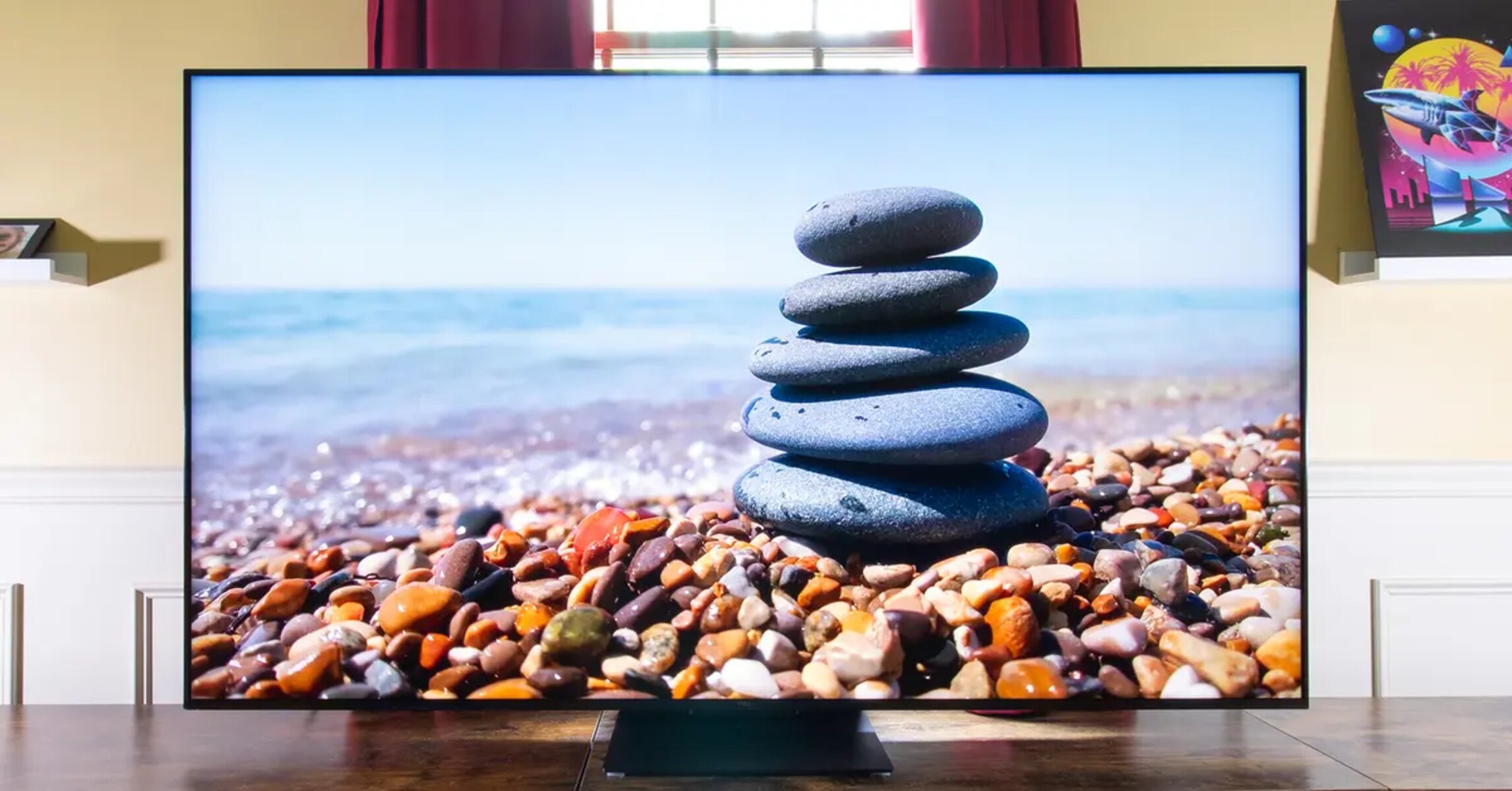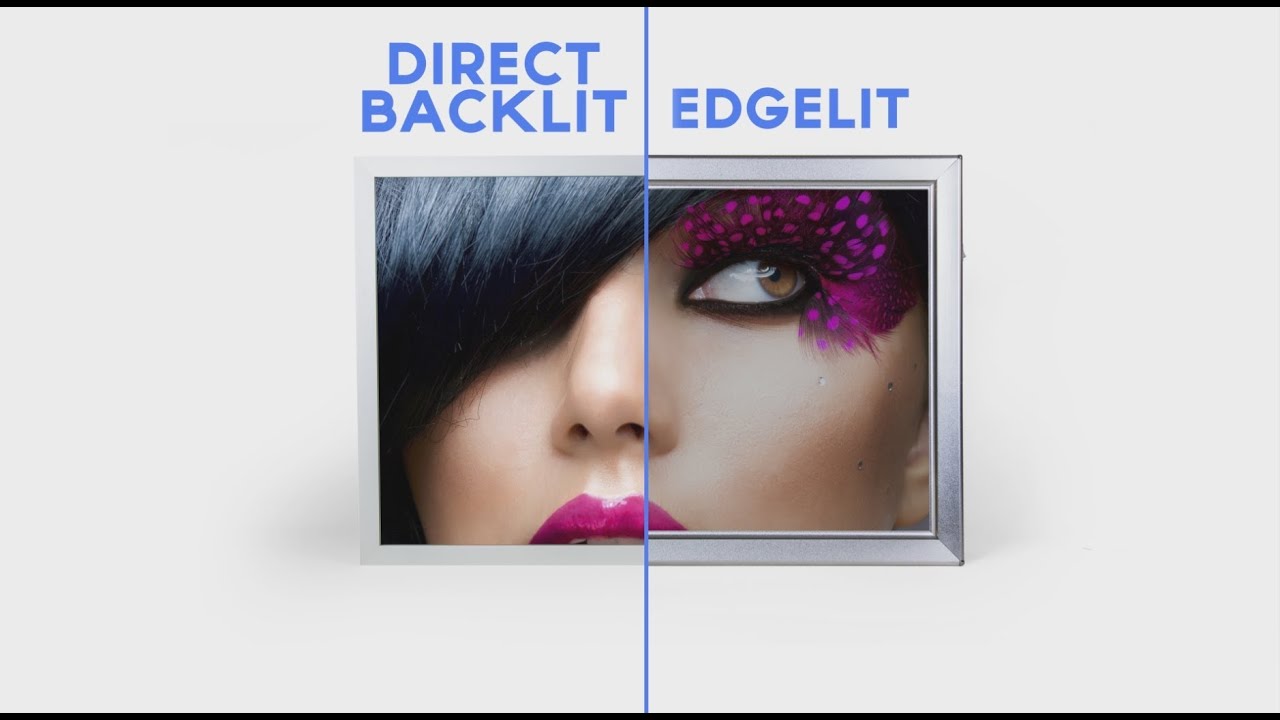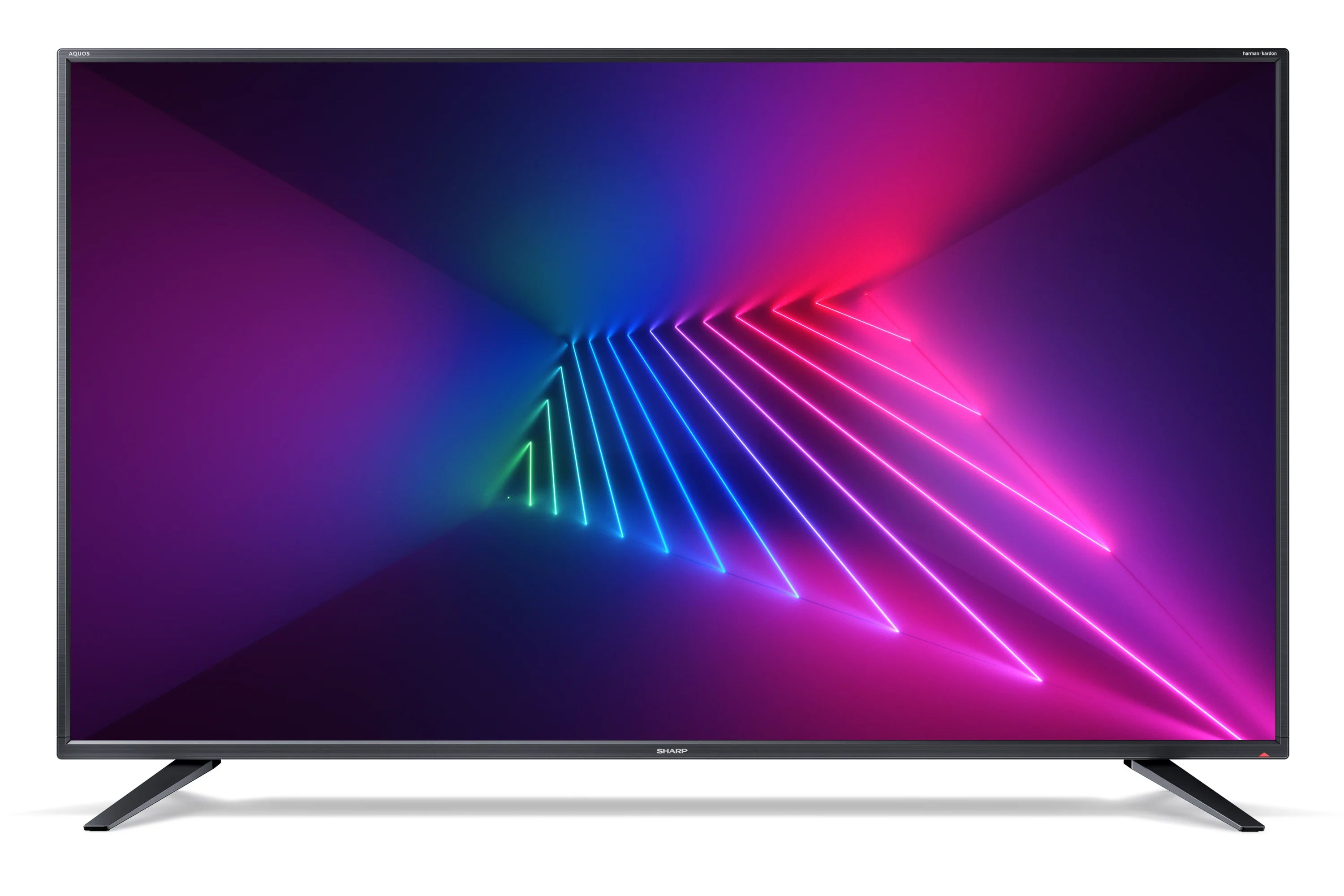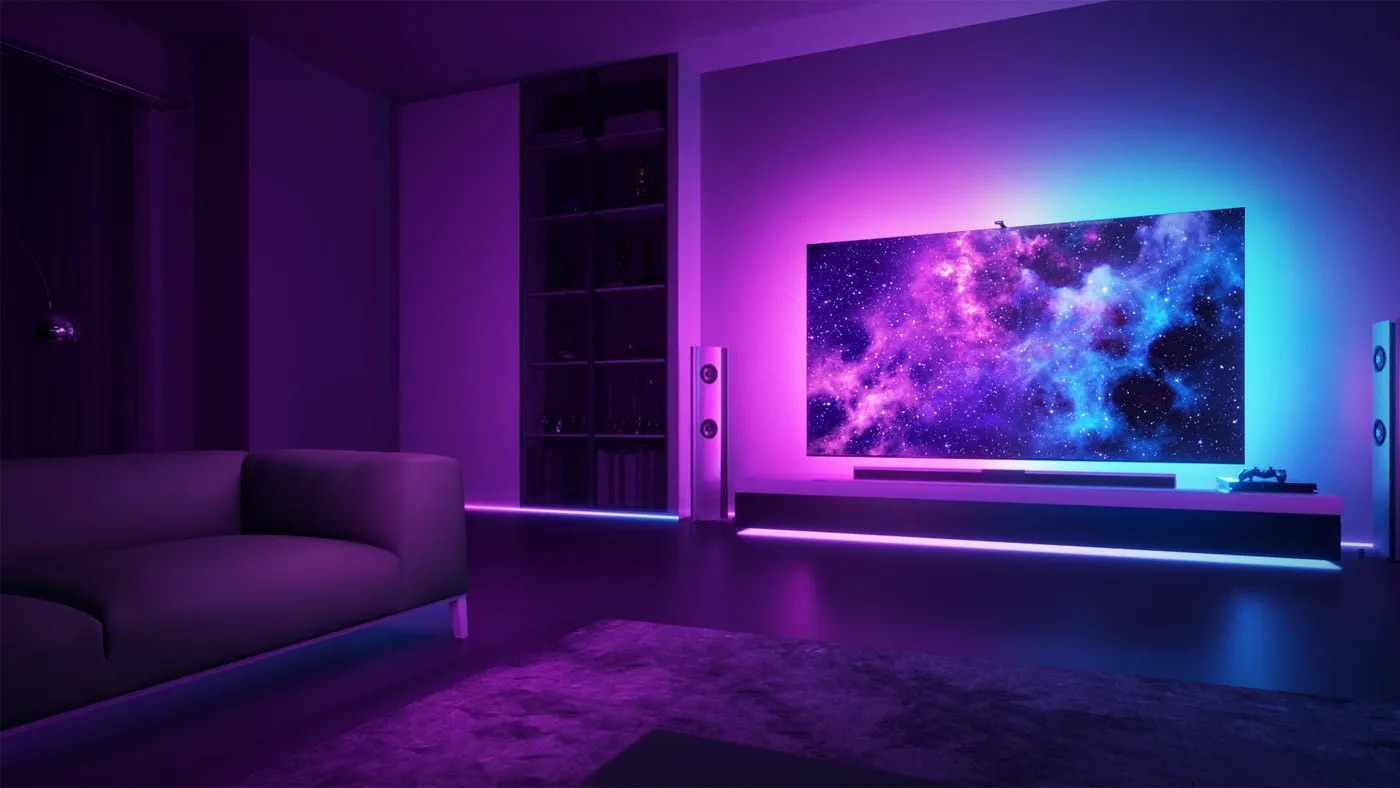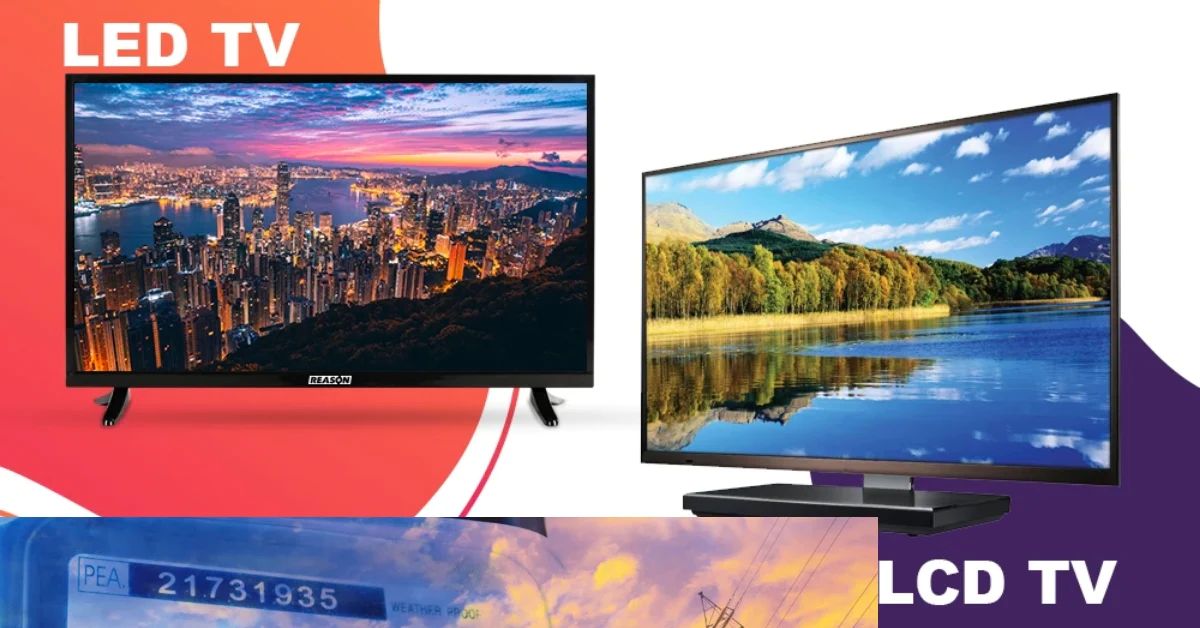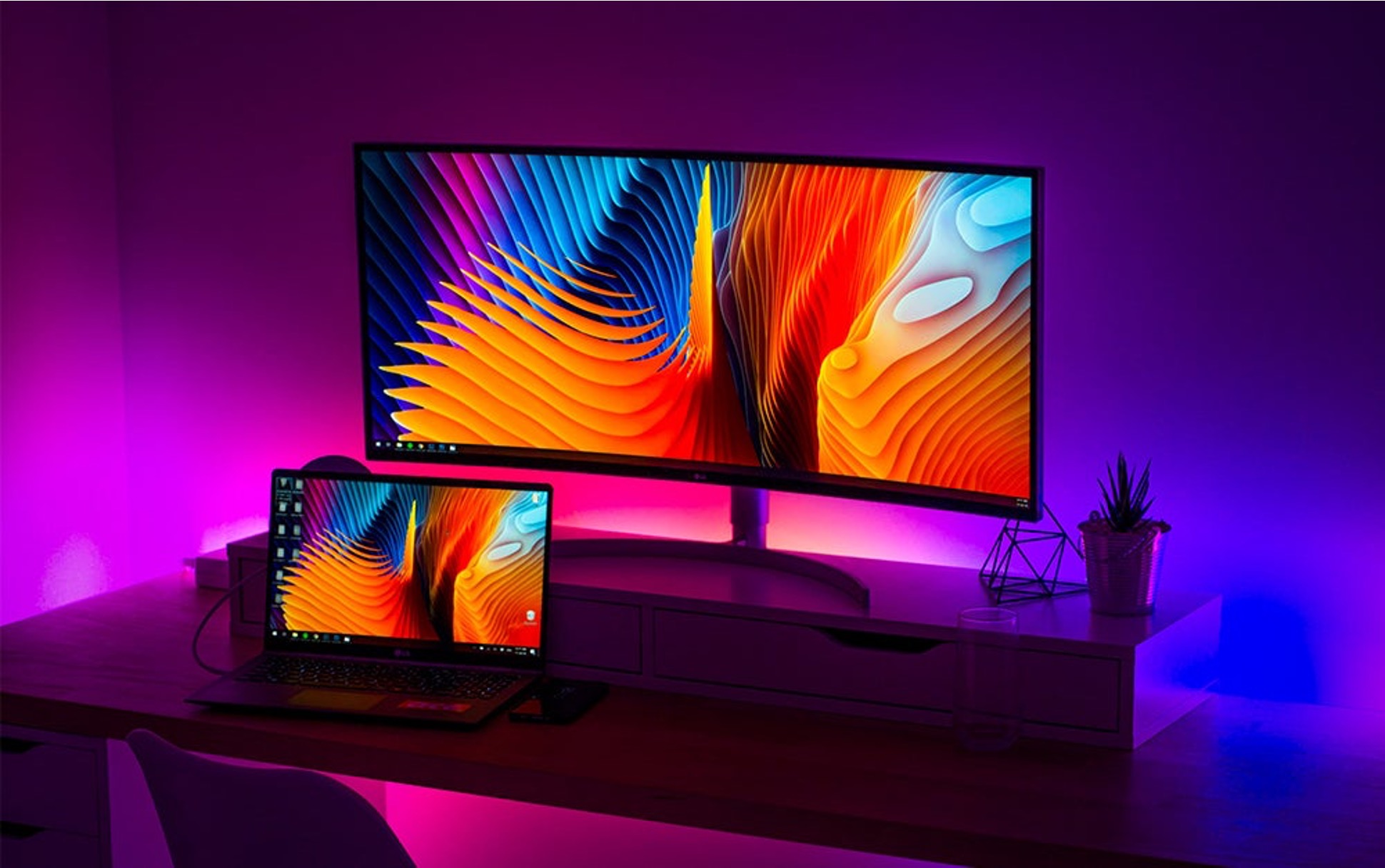Introduction
Welcome to the world of edge-lit LED TV screens! In this digital age, televisions have come a long way, evolving from bulky, cathode ray tube (CRT) displays to sleek, energy-efficient LED screens. Among the different types of LED screens available, edge-lit LED TV screens have gained popularity for their slim design and vibrant picture quality.
So, what exactly is an edge-lit LED TV screen? How does it differ from other types of LED screens? In this article, we will explore the concept of edge-lit LED TV screens, their advantages and disadvantages, how they work, and more. Whether you’re in the market for a new television or simply interested in learning about the latest technology, this article will provide valuable insights.
Edge-lit LED TV screens are named so because of the way they are illuminated. Unlike traditional backlit screens, which have an array of LEDs placed directly behind the screen, edge-lit screens have LEDs located around the edges of the panel. These LEDs shine inward toward the center of the screen, illuminating the pixels and creating a bright and vivid display.
One of the key advantages of edge-lit LED TV screens is their sleek and slim profile. These screens are typically much thinner than their backlit counterparts, making them ideal for wall mounting or placement in tight spaces. The slim design not only adds a touch of elegance to any room but also makes installation and setup a breeze.
In addition to their slim design, edge-lit LED TV screens often offer enhanced energy efficiency. Since the LEDs are located around the edges and not directly behind the screen, they require less power to operate, resulting in reduced energy consumption. This not only saves you money on your electricity bills but also contributes to a greener environment.
While edge-lit LED TV screens offer many advantages, there are a few drawbacks to consider. One notable disadvantage is the potential for uneven backlighting. Since the LEDs are located along the edges, there is a higher chance of brightness inconsistencies across the screen. This can result in areas of the display appearing darker or lighter than others, affecting the overall picture quality.
In the next section, we will explore the differences between edge-lit LED TV screens and their backlit counterparts. Understanding these differences will help you make an informed decision when choosing the right television for your needs. So, let’s dive in and discover the world of edge-lit LED TV screens!
What is Edge-Lit LED TV Screen?
An edge-lit LED TV screen is a type of display technology commonly used in modern flat-panel televisions. Unlike traditional backlit LCD screens, edge-lit LED screens utilize a different method of illuminating the pixels. As the name suggests, the LEDs are positioned along the edges of the screen, emitting light that is directed towards the center.
The key component of an edge-lit LED TV screen is a light guide panel (LGP) or light guide plate (LGP). This panel is made from a transparent material, such as acrylic or polycarbonate, and is located behind the screen. It helps distribute the light evenly across the display area.
Along the edges of the screen, there is a grid or array of LEDs. These LEDs emit light that is injected into the LGP. The LGP then disperses the light throughout the screen, illuminating the pixels and producing a vibrant and visually pleasing image.
Edge-lit LED technology offers a number of advantages. Firstly, it allows for a thinner and more lightweight design compared to backlit screens. By having the LEDs positioned around the edges, the TV can have a sleek profile, making it easier to integrate into any living space.
Another advantage of edge-lit LED TV screens is their energy efficiency. Since the LEDs are located at the edges and don’t have to cover the entire back of the screen, less power is needed to illuminate the pixels. This results in lower energy consumption and reduced electricity costs, making edge-lit LED TVs an environmentally friendly choice.
Additionally, edge-lit LED screens often feature local dimming technology. This allows specific areas of the screen to be dimmed or brightened independently, enhancing the contrast and improving the overall picture quality. With local dimming, dark scenes appear deeper and more detailed, while bright scenes are more vibrant and crisp.
It is important to note that there are different variations of edge-lit LED TV screens available in the market. Some models use white LEDs, while others incorporate RGB (Red, Green, Blue) LEDs. The use of RGB LEDs enables the TV to produce a wider color gamut and achieve more accurate color reproduction.
In summary, an edge-lit LED TV screen is a type of display technology that utilizes LEDs positioned around the edges of the screen to illuminate the pixels. This design allows for a sleek and lightweight television, along with energy efficiency and vibrant image quality. Now that we have explored what edge-lit LED TV screens are, let’s delve into the advantages and disadvantages of this technology.
Advantages of Edge-Lit LED TV Screen
Edge-lit LED TV screens offer several advantages that make them a popular choice among consumers. Here are some key benefits of opting for an edge-lit LED TV:
1. Slim and Stylish Design: One of the notable advantages of edge-lit LED TV screens is their slim and sleek profile. By positioning the LEDs along the edges, manufacturers can create TVs that are significantly thinner than traditional backlit models. This slim design not only adds a touch of elegance to any room but also makes installation and wall mounting a breeze.
2. Energy Efficiency: Edge-lit LED TV screens are highly energy-efficient compared to their backlit counterparts. By illuminating the pixels from the edges, these TVs require fewer LEDs to cover the entire screen. As a result, they consume less power, leading to reduced energy consumption and lower electricity bills. Over time, this energy-efficient technology can make a significant difference in your household’s environmental impact and your budget.
3. Local Dimming Capability: Many edge-lit LED TV screens come equipped with local dimming technology. This feature allows specific areas of the screen to be dimmed or brightened independently, enhancing the contrast and improving the overall picture quality. With local dimming, dark scenes appear deeper and more detailed, while bright scenes are more vibrant and lifelike. This capability adds depth and realism to your viewing experience.
4. Wide Color Gamut: Some edge-lit LED TV screens utilize RGB (Red, Green, Blue) LEDs, allowing for a wider color gamut and more accurate color reproduction. This means that the TV can display a broader range of colors, resulting in more vibrant and lifelike images. Whether you’re watching your favorite movies, sports, or playing video games, the enhanced color performance of edge-lit LED TVs adds a heightened level of visual immersion.
5. Enhanced Viewing Angles: Edge-lit LED screens often provide wider viewing angles compared to other display technologies. This means that you can enjoy consistent picture quality and color accuracy from various positions in the room. Whether you’re sitting directly in front of the TV or off to the side, edge-lit LED screens offer a more inclusive viewing experience for everyone.
6. Better Contrast Ratios: Edge-lit LED TV screens have the advantage of achieving higher contrast ratios compared to other display technologies. The local dimming feature allows for deeper blacks and brighter whites, resulting in improved overall contrast. This ensures that the details in both dark and bright scenes are more pronounced and visually appealing.
In summary, edge-lit LED TV screens offer a range of advantages, including a slim and stylish design, energy efficiency, local dimming capability, wider color gamut, enhanced viewing angles, and better contrast ratios. These benefits contribute to an immersive and visually captivating viewing experience. However, it’s essential to also consider the disadvantages of this technology, which we will explore in the next section.
Disadvantages of Edge-Lit LED TV Screen
While edge-lit LED TV screens offer many benefits, there are also some disadvantages to consider when making a purchasing decision. It’s important to be aware of these drawbacks to ensure you choose the right TV for your needs. Here are the main disadvantages of edge-lit LED TV screens:
1. Uneven Backlighting: One of the primary concerns with edge-lit LED TV screens is the potential for uneven backlighting. Since the LEDs are located along the edges, there is a higher chance of brightness inconsistencies across the screen. This can result in areas of the display appearing darker or lighter than others, affecting the overall picture quality. While manufacturers have made advancements in minimizing this issue, it can still be noticeable in some cases.
2. Limited Local Dimming Zones: Although local dimming is a feature found in many edge-lit LED TVs, the number of dimming zones is often limited compared to full-array backlit TVs. This can result in less precise control over brightness adjustments. With fewer dimming zones, it may be challenging for the TV to accurately dim specific portions of the screen, leading to potential haloing or blooming effects around bright objects on a dark background.
3. Reduced Contrast Ratio with Wide Viewing Angles: While edge-lit LED screens often offer wider viewing angles, there can be a trade-off with contrast ratio performance. The contrast ratio may decrease when the TV is viewed from an angle, resulting in reduced image quality and less pronounced black levels. Therefore, if you frequently watch TV from off-center positions, it’s worth considering the impact on contrast ratio.
4. Lower Peak Brightness: Compared to full-array backlit TVs, edge-lit LED TVs typically have lower peak brightness levels. This can affect the overall HDR (high dynamic range) performance of the TV, limiting its ability to display a wide range of bright highlights and details in HDR content. If you value bright, high-impact visuals, you may want to consider other display technologies that offer higher peak brightness levels.
5. Limited Design Options: While the slim and lightweight design of edge-lit LED TVs is an advantage, it can also limit some of the design options. To achieve the desired slimness, these TVs may sacrifice certain features such as built-in speakers or the ability to accommodate the latest display technologies. If you require a TV with specific features or cutting-edge technology, it’s important to consider the design limitations of edge-lit LED screens.
It’s worth noting that not all edge-lit LED TVs will suffer from these disadvantages to the same extent. Manufacturers continuously improve their technology and implement innovations to address these issues. It’s recommended to research and read reviews of specific models to determine their performance in terms of backlighting consistency, local dimming quality, and overall image quality.
In the next section, we will compare edge-lit LED TV screens to another type of display technology – backlit TV screens. Understanding the differences between these two types will help you make an informed decision when selecting a new TV.
Edge-Lit LED vs. Backlit TV Screens
When it comes to choosing a TV, one of the important considerations is the type of display technology used. Two commonly used technologies are edge-lit LED and backlit screens. Let’s explore the main differences between these two types of TV screens:
1. Lighting Method: The primary difference between edge-lit LED and backlit TV screens is the way in which they are illuminated. In edge-lit LED screens, the LEDs are positioned around the edges, whereas in backlit screens, the LEDs are placed directly behind the LCD panel. This fundamental difference affects how the light is distributed across the screen.
2. Local Dimming Capability: Edge-lit LED TV screens often come with local dimming technology, which allows specific areas of the screen to be dimmed independently. This can improve contrast and enhance the overall picture quality. On the other hand, backlit screens are capable of full-array local dimming, which provides more precise control over dimming zones. This results in better handling of bright and dark scenes, minimizing blooming and enhancing overall picture quality.
3. Uniformity: Backlit TV screens have an advantage when it comes to uniformity. Since the LEDs are placed directly behind the LCD panel, they offer more even backlighting, leading to a more uniform distribution of light across the screen. Edge-lit LED screens, in contrast, have a higher likelihood of brightness inconsistencies, especially towards the center of the screen.
4. Brightness: Backlit screens generally have higher peak brightness levels compared to edge-lit LED screens. This means they are capable of producing brighter and more vibrant images, especially in HDR content. Higher peak brightness allows for more dazzling highlights and better overall image quality in scenes with a wide range of brightness levels.
5. Design and Thickness: Edge-lit LED screens have a distinct advantage when it comes to design and thinness. By placing the LEDs along the edges, manufacturers can achieve a slim and lightweight profile, making the TV more aesthetically pleasing and easier to mount on a wall. Backlit screens, while not as slim, may offer other features such as built-in speakers that edge-lit LED screens often sacrifice due to their thin design.
6. Price: Edge-lit LED TV screens are generally more affordable compared to backlit screens. The technology used in edge-lit LED screens is less complex, resulting in a lower price point for consumers. This makes edge-lit LED TVs a popular choice for budget-conscious buyers.
It’s important to consider your priorities and preferences when choosing between edge-lit LED and backlit TV screens. If you value a slim design, energy efficiency, and cost-effectiveness, an edge-lit LED TV may be the right choice for you. On the other hand, if you prioritize superior picture quality, full-array local dimming, and higher brightness levels, a backlit screen may be more suitable.
In the next section, we will dive deeper into how edge-lit LED TV screens work to create the stunning visuals we enjoy. Understanding the inner workings of this technology will further enhance our appreciation for it.
How Does Edge-Lit LED TV Work?
Understanding how edge-lit LED TV screens work can give us insight into the technology behind the stunning visuals they produce. Here’s a simplified explanation of the key components and functioning of an edge-lit LED TV:
1. Light Guide Panel (LGP): The heart of an edge-lit LED TV is the light guide panel (LGP). This transparent panel, typically made from acrylic or polycarbonate, is located behind the screen. Its primary function is to distribute light uniformly across the display area.
2. Edge-Lit LEDs: Along the edges of the TV screen, there is an array of LEDs (Light Emitting Diodes). These LEDs emit light that is directed towards the center of the screen. The light enters the LGP, where it undergoes a process known as total internal reflection.
3. Reflection and Scattering: As the light travels through the LGP, its path is determined by the shape and structure of the panel. This causes the light to bounce off the edges of the LGP, reflecting and scattering it within the panel. The scattering helps to evenly distribute the light across the screen, ensuring uniform illumination of the pixels.
4. Refraction and Reflection: As the light reaches the individual pixels, it passes through layers of optical films that help enhance the image quality. These films can include polarizers, diffusers, and color filters. The light enters the liquid crystal layer of each pixel, where the liquid crystals align to either block or allow the light to pass through based on electrical signals.
5. Pixel Illumination: The light that successfully passes through the liquid crystal layer illuminates the corresponding pixels, creating the image on the screen. By selectively controlling the liquid crystals in each pixel, the TV can produce a wide range of colors and shades.
6. Local Dimming: Some edge-lit LED TVs come equipped with local dimming capabilities. This feature allows specific areas of the screen to be dimmed or brightened independently, enhancing contrast and improving overall picture quality. The dimming is achieved by adjusting the brightness of the LEDs located along the edges, creating more precise control over light output in different parts of the screen.
By combining these components and processes, edge-lit LED TVs create vibrant and visually appealing images. The technology offers a slim design, energy efficiency, and the ability to display a wide range of colors and shades. However, it’s important to note that the exact implementation and performance of edge-lit LED technology can vary among different TV models and manufacturers.
Now that we have explored the inner workings of edge-lit LED TV screens, let’s take a look at the different types of edge-lit LED TVs available in the market in the next section.
Different Types of Edge-Lit LED TVs
When it comes to edge-lit LED TVs, there are different variations available in the market. These variations offer unique features and technologies to cater to different preferences and requirements. Let’s explore some of the different types of edge-lit LED TVs:
1. Basic Edge-Lit LED TVs: These are the entry-level edge-lit LED TVs that provide the fundamental features of this technology. They offer a slim design, energy efficiency, and vibrant picture quality. Basic edge-lit LED TVs are often more affordable, making them a popular choice for budget-conscious consumers who still want to enjoy the benefits of LED technology.
2. Quantum Dot (QLED) Edge-Lit LED TVs: Quantum Dot (QLED) technology takes edge-lit LED TVs to the next level by enhancing color accuracy and allowing for a wider color gamut. QLED TVs use quantum dots, which are microscopic semiconductor particles that emit light of specific colors when stimulated by photons. This technology produces vivid and lifelike colors, creating a more immersive viewing experience.
3. Enhanced Local Dimming Edge-Lit LED TVs: Some edge-lit LED TVs offer enhanced local dimming capabilities. These TVs have a higher number of dimming zones compared to standard models, providing more precise control over backlighting. This results in better contrast and improved overall picture quality, especially in scenes with a wide range of brightness levels.
4. Smart Edge-Lit LED TVs: Smart TVs are a popular choice for those looking to stay connected and access streaming services directly on their TV. Smart edge-lit LED TVs come equipped with built-in Wi-Fi capabilities and smart features, allowing users to browse the internet, stream content from popular apps, and connect to other devices. These TVs often come with an intuitive user interface and remote control for easy navigation.
5. Curved Edge-Lit LED TVs: Curved TVs offer a unique viewing experience by providing a wider field of view and a more immersive feeling. Curved edge-lit LED TVs have a gentle curve across the screen, which aims to enhance depth perception and reduce distortion at the edges. These TVs are designed to provide a more cinematic feel, creating a sense of being surrounded by the action on the screen.
6. Ultra-Thin Edge-Lit LED TVs: Ultra-thin edge-lit LED TVs take slimness to the extreme, offering an incredibly thin and lightweight design. These TVs are designed to be wall-mounted effortlessly, saving valuable space in your living room or entertainment area. Ultra-thin edge-lit LED TVs combine the benefits of edge-lit LED technology with a sleek and minimalist aesthetic.
It’s important to consider your specific needs and preferences when choosing the type of edge-lit LED TV that is right for you. Whether you prioritize color accuracy, enhanced local dimming, smart features, a curved screen, or ultra-thin design, there is a wide range of options available to suit your requirements.
In the next section, we will address some frequently asked questions about edge-lit LED TVs to provide further clarity on this display technology.
Frequently Asked Questions (FAQs)
Here are some commonly asked questions about edge-lit LED TVs:
1. Are edge-lit LED TVs better than backlit TVs?
Edge-lit LED TVs offer advantages such as slim design, energy efficiency, and affordability. However, backlit TVs may provide better overall picture quality, uniform backlighting, and higher peak brightness. The choice ultimately depends on your priorities and budget.
2. Can edge-lit LED TVs suffer from backlight bleeding?
Backlight bleeding refers to the uneven distribution of backlighting, resulting in areas appearing brighter than they should be. While edge-lit LED TVs can suffer from this issue, advancements in technology have significantly reduced backlight bleeding in modern models.
3. Do edge-lit LED TVs have HDR (high dynamic range) capability?
Yes, many edge-lit LED TVs support HDR content. However, it’s important to note that not all edge-lit LED TVs offer the same HDR performance. Some models may have limited brightness capabilities, which can affect their HDR image quality.
4. Can edge-lit LED TVs handle fast-motion scenes and gaming?
Edge-lit LED TVs can handle fast-motion scenes and gaming quite well. Opting for models with higher refresh rates, such as 120Hz or 240Hz, can help minimize motion blur and provide a smoother gaming experience.
5. Can I mount an edge-lit LED TV on the wall?
Yes, edge-lit LED TVs are designed to be slim and lightweight, making them suitable for wall mounting. However, it’s essential to follow the manufacturer’s guidelines and use a compatible wall mount to ensure stability and safety.
6. How do I control the backlight brightness of my edge-lit LED TV?
Most edge-lit LED TVs come with built-in settings to control the backlight brightness. You can usually adjust this setting through the TV’s on-screen menu or remote control. Some TVs also offer automatic ambient light sensors that adjust the backlight based on the room’s lighting conditions.
7. Can I watch edge-lit LED TVs from any angle without losing picture quality?
While edge-lit LED TVs generally offer wider viewing angles compared to other display technologies, there can be a decrease in contrast ratio and image quality when viewed from extreme angles. It’s best to position yourself within a reasonable viewing angle to fully appreciate the screen’s picture quality.
8. Are edge-lit LED TVs suitable for outdoor use?
Edge-lit LED TVs are primarily designed for indoor use. Outdoor environments expose the TV to various weather conditions and direct sunlight, which can affect the screen’s visibility and performance. It’s recommended to choose specifically designed outdoor TVs for outdoor use.
These FAQs provide answers to some common questions about edge-lit LED TVs. For specific details about a particular model, refer to the manufacturer’s specifications or consult a knowledgeable sales representative.
In the final section, we will wrap up our discussion on edge-lit LED TV screens.
Conclusion
Edge-lit LED TV screens offer a range of benefits, making them a popular choice among consumers. Their slim and stylish design, energy efficiency, local dimming capability, wide color gamut, enhanced viewing angles, and better contrast ratios result in a captivating and immersive viewing experience.
However, it’s important to consider the disadvantages of edge-lit LED TV screens as well. Potential issues such as uneven backlighting, limited local dimming zones, decreased contrast ratio with wide viewing angles, lower peak brightness, and design limitations should be taken into account when making a purchase decision.
When comparing edge-lit LED TV screens to backlit screens, it becomes clear that both technologies have their own strengths and weaknesses. Backlit screens offer more precise control over local dimming, better uniformity, and higher peak brightness, while edge-lit LED screens excel in slim design, energy efficiency, and affordability.
It’s crucial to choose the right type of edge-lit LED TV that suits your specific needs and preferences. Whether you opt for a basic model, a Quantum Dot (QLED) display, enhanced local dimming, smart features, a curved screen, or an ultra-thin design, you can find a range of options available in the market.
By understanding the inner workings of edge-lit LED TV screens, you can appreciate the technology and the efforts made to create stunning visuals. Factors such as the light guide panel, edge-lit LEDs, reflection, refraction, and pixel illumination contribute to the vibrant and lifelike images displayed on the screen.
In summary, edge-lit LED TV screens offer an excellent combination of style, energy efficiency, and picture quality. Whether you’re a movie enthusiast, sports lover, gamer, or simply looking to upgrade your TV, edge-lit LED technology provides a compelling option. Consider your preferences, compare features, and read reviews to make an informed decision that will transform your entertainment experience.







